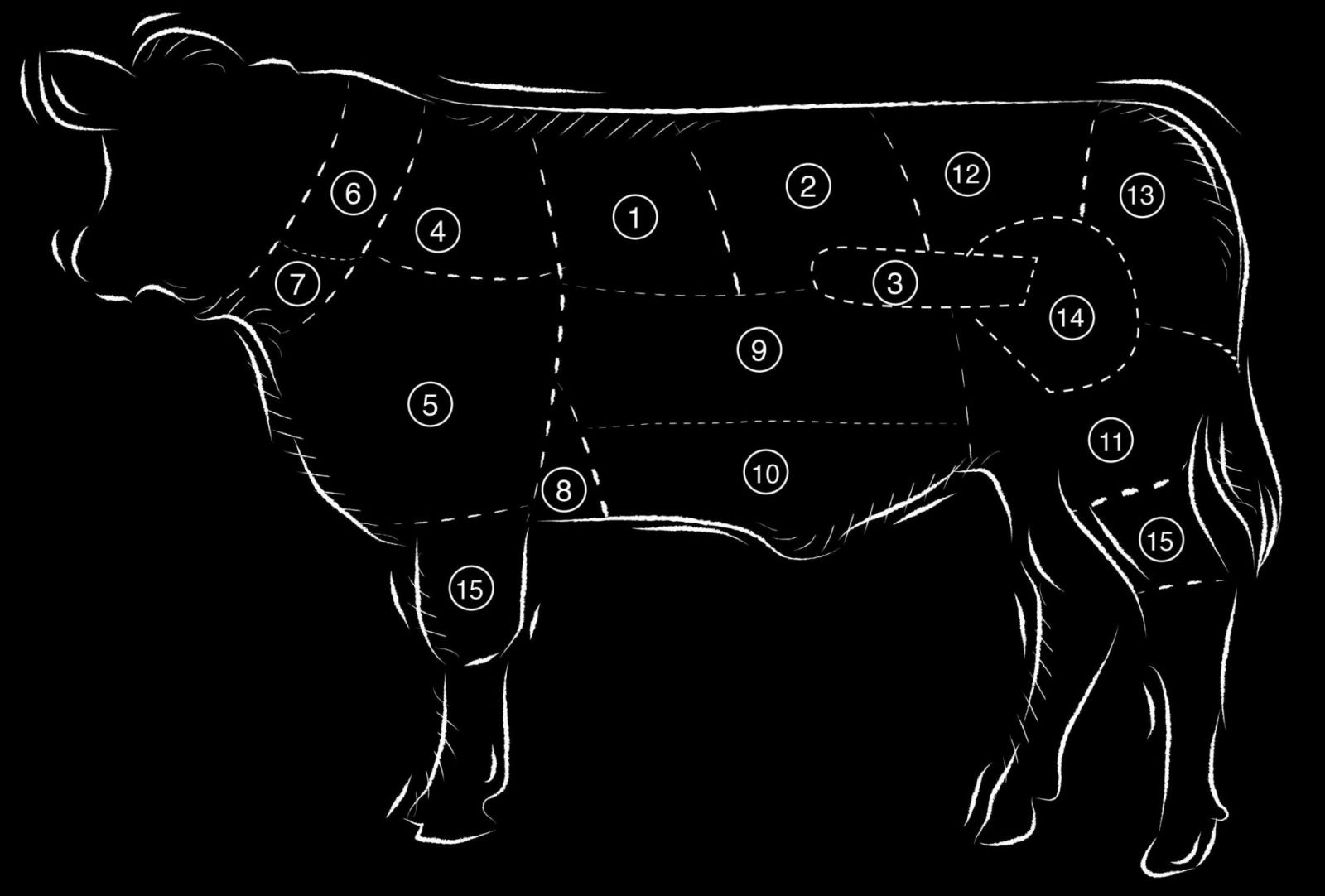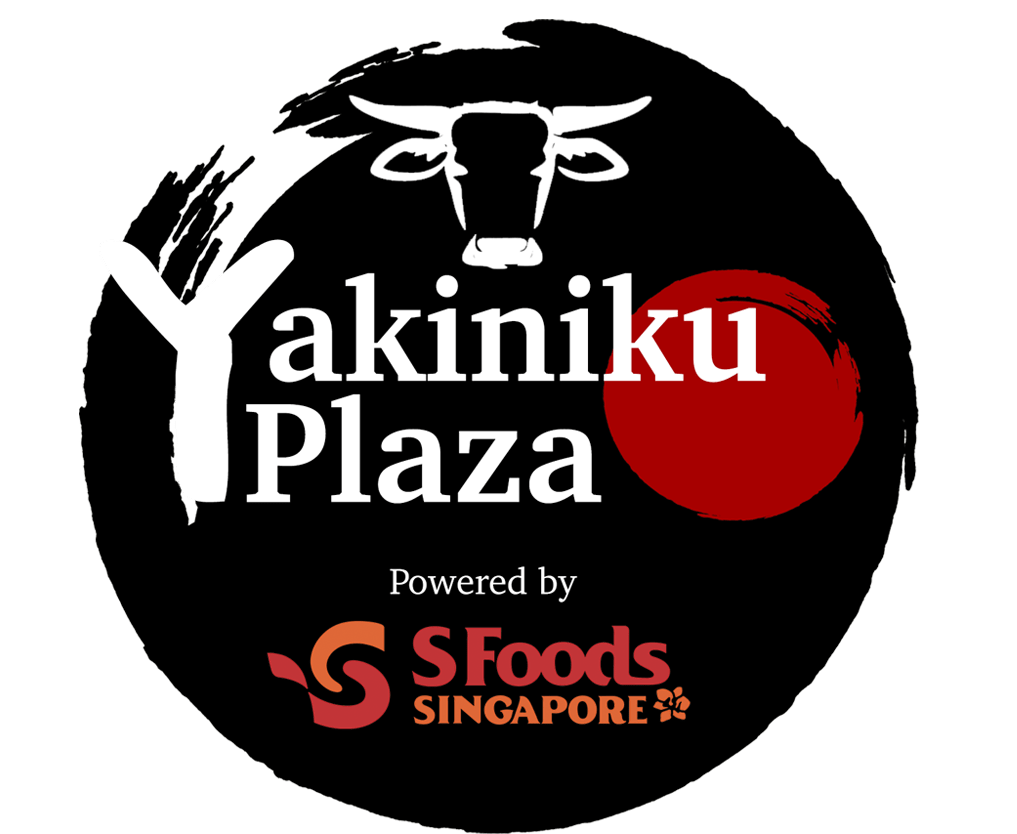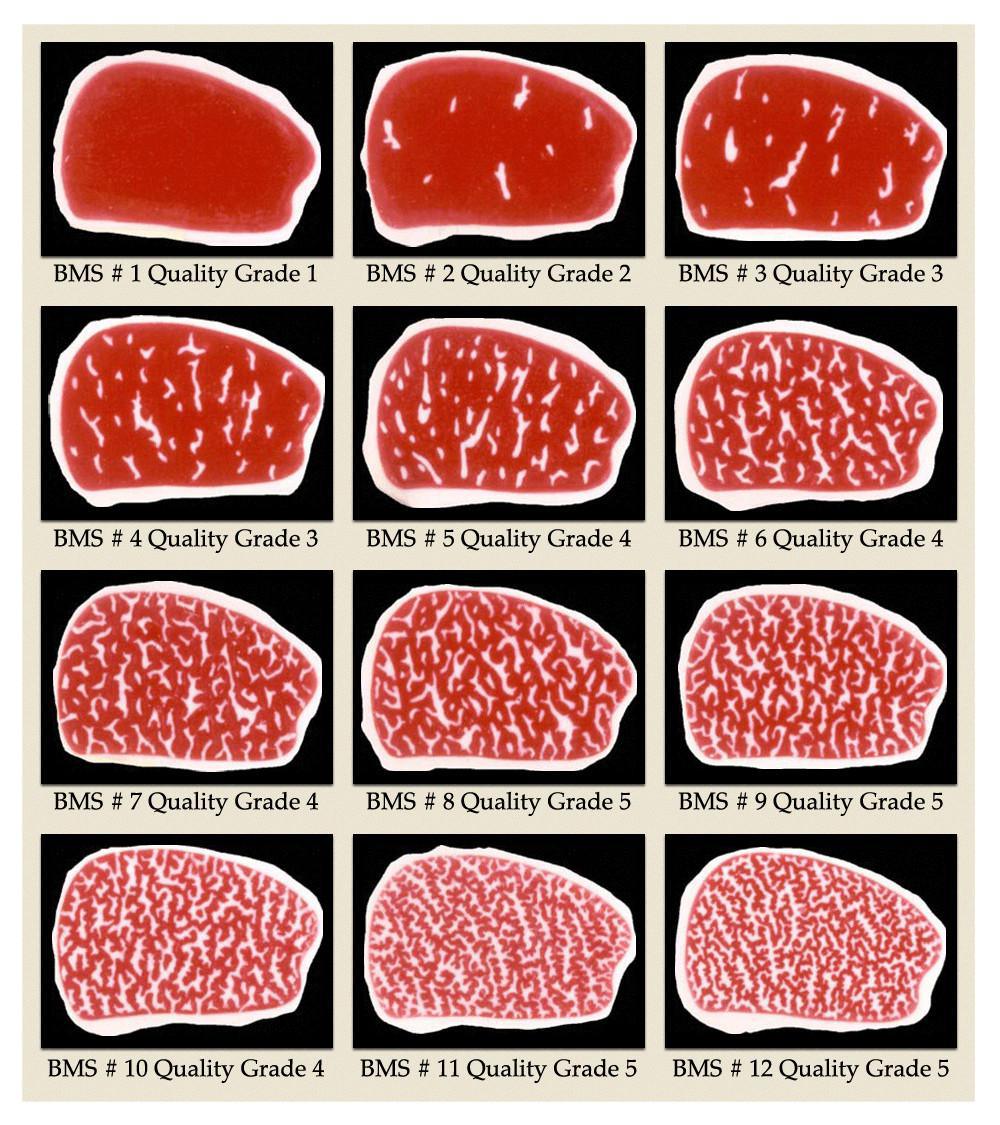Cuts & Grades


RIBEYE
Ribeye is one of the prime cut, located next to the chuck at the dorsal side of the rib area. The meat is thick and fine-textured. It is often well marbled giving it a full-bodied flavor.
Best for: Steak, Shabu Shabu, Sukiyaki and Yakiniku

SIRLOIN
Sirloin is considered a high-quality cut and is located behind Ribeye. Its meat is finely textured and tender. It holds the shape well and it is possible to obtain identically sized cuts, making it ideal for steak.
Best for: Steak, Shabu Shabu, Sukiyaki and Yakiniku

TENDERLOIN
Tenderloin is located on the inside of the loin, contains practically no muscle and is characterized by its fine texture, tenderness and low-fat content. It accounts for only 2% of the entire dressed carcass and it is a luxury item making it the most expensive cut of beef available.
Best for: Steak and Yakiniku

CHUCK ROLL
The chuck roll is divided into the chuck and the neck. The chuck roll can be well-marbled and the meat is tender and tasty making it perfect for sukiyaki and barbecuing.
Best for: Shabu Shabu

SHOULDER CLOD
The Shoulder Clod is made up of both lean and tender meat and has a deep color and strong flavor.
Best for: Yakiniku and Stewing

NECK
Neck meat is lean, perfect for consumers who do not like fats. The meat is also compromised of a large proportion of muscle tissue, making it ideal for stewing.
Best for: Stewing

CHUCK TENDER
Chuck tender is rare because only 2KG can be obtained. It is well marbled with a subtle, sweet taste that grows stronger the more it is chewed.
Best for: Yakiniku

BRISKET
The brisket refers to the chest of the cow and is made up of cuts with very different meat qualities including fatty and tough pectoral meat. It is located under the rib – brisket (pectoral meat) is lean and tender, and chuck short rib (chuck rib) has more flavor and beautiful marbling.
Best for: Yakiniku

SHORT RIB
Short rib has a rough texture however the lean meat and fat are proportionately mixed giving it a rich taste and flavor.
Best for: Yakiniku

SHORT PLATE
Short plate has a rough texture is characterized by its rich flavor. It includes a cut known as the flank steak with a proportionate distribution of meat and fat.
Best for: Yakiniku

KNUCKLE
The knuckle consists primarily of lean meat. It consists of four parts:
- inside knuckle muscle – slightly deep in color and tender;
- knuckle main muscle – Fine textured and tasty
- outside knuckle – Deep in color and slightly tough
- Tri-tip – There’s marbling but is not as tender as its appearance shows
Best for: Stewing and Shabu Shabu

RUMP
Rump part is lean, finely textured and is characterized by the proportionate fat and is tender.
Best for: Steak and roasting

GOOSENECK ROUND
Gooseneck round is the lean, well-muscled part of the round. The meat is generally tough with a small content of fats.
Best for: Stewing

TOP-ROUND
The top-round consists of a large block with a proportionately large amount of lean meat. It has a cover of fat however very little underneath. Meat quality can vary from outside, towards the gooseneck round the meat contains proportionately fat, however has a rough texture with slightly tough meat. On the other hand, meat towards the knuckle is characteristically tender.
Best for: Stewing and roasting

SHANK
The shin is well-muscled and consists primarily lean meat. Apply slow cooking to the meat and once the collagen flows out, the meat will be soften.
Best for: Stewing
Wagyu Grading
Grading system to identify meat yield and quality.
Grading is divided into two main categories of yield grade and meat quality grade. For meat quality grading, a five-step evaluation is made on the following four points: marbling, color and shine of meat, firmness and texture, and fat color and shine, with the fifth grade as the highest.
Yield grades are to judge the final meat ratio. Based on the specific calculation method, carcass is put into one of the following categories. Grade judgement is conducted by combining the yield grading and quality grading, e.g. A5, A3.


